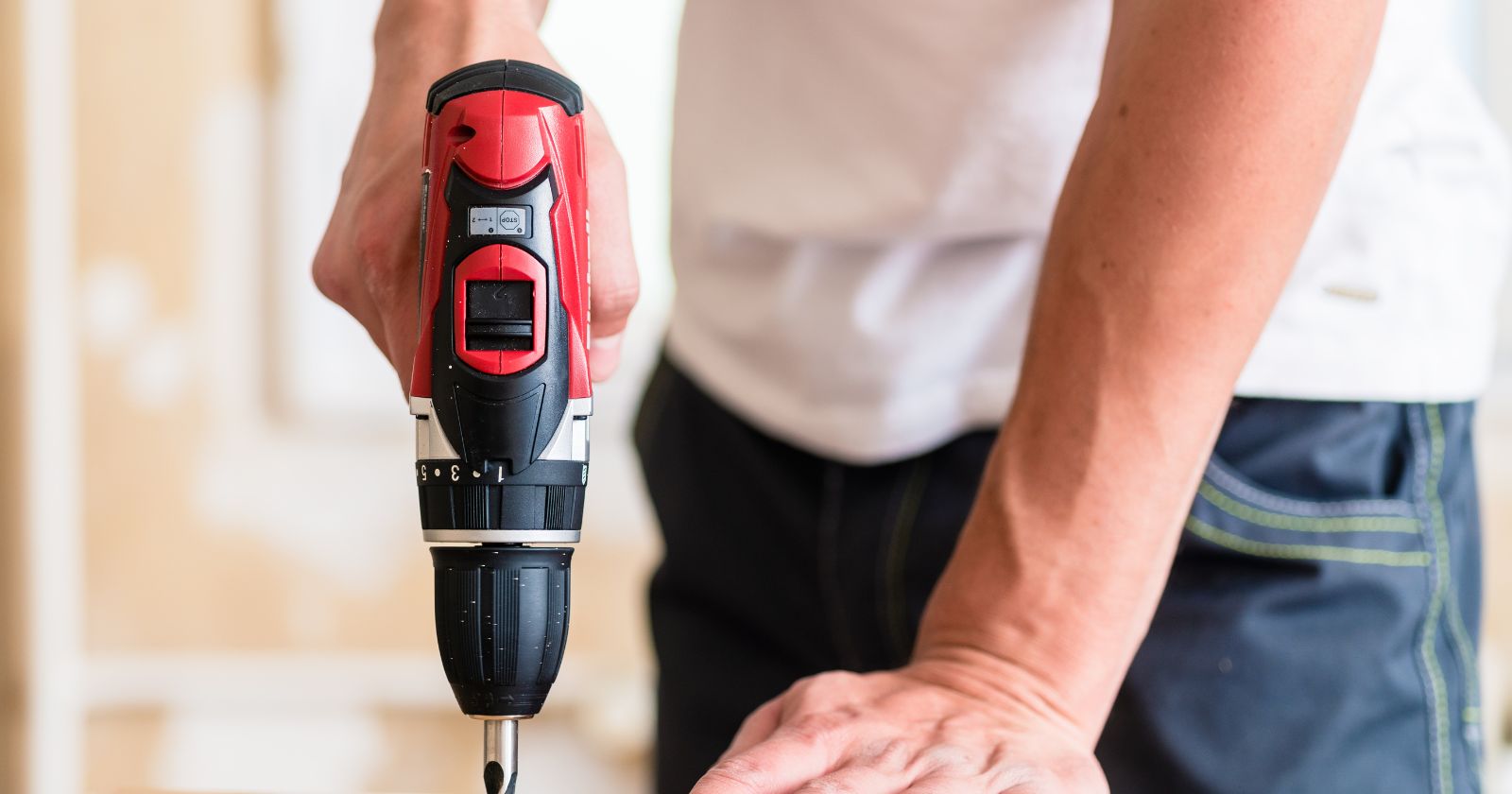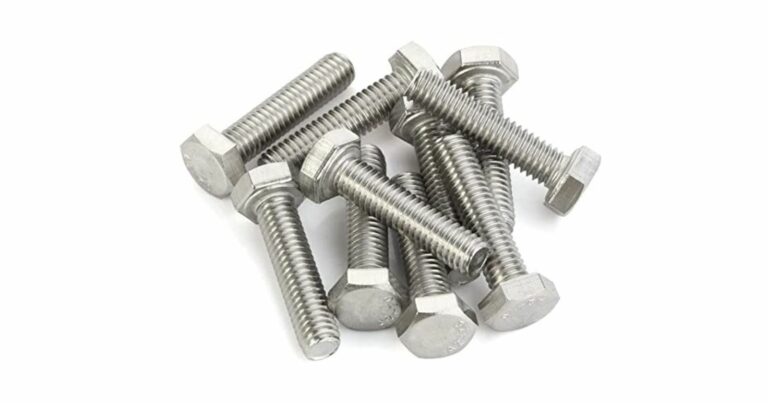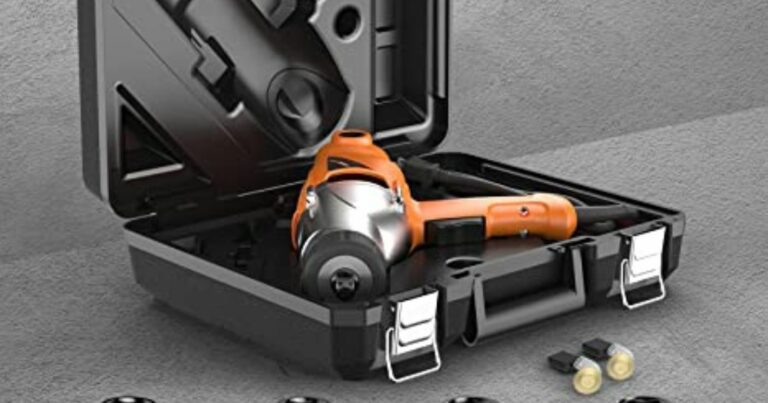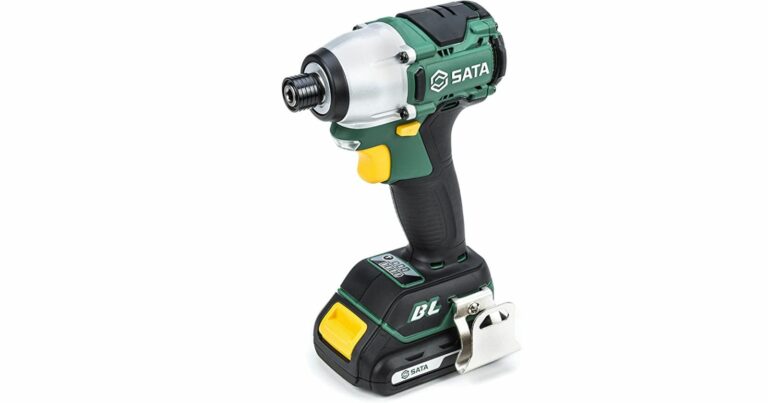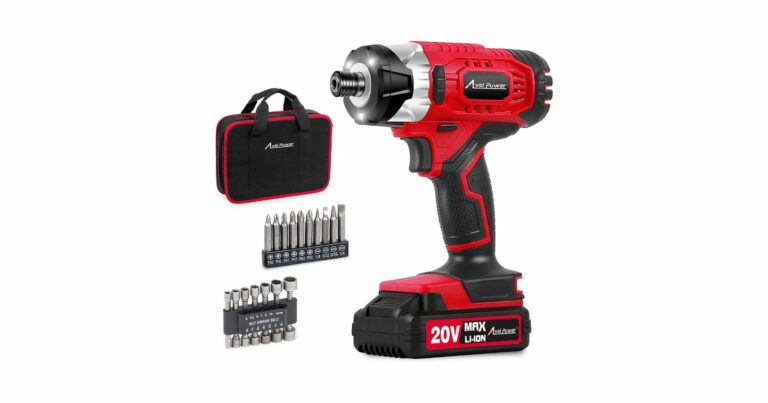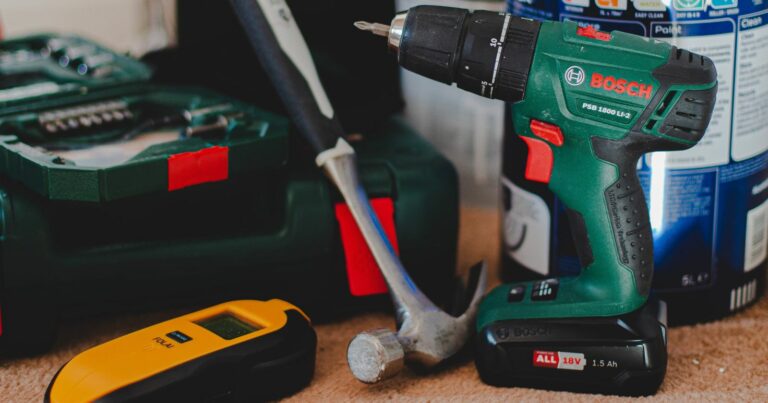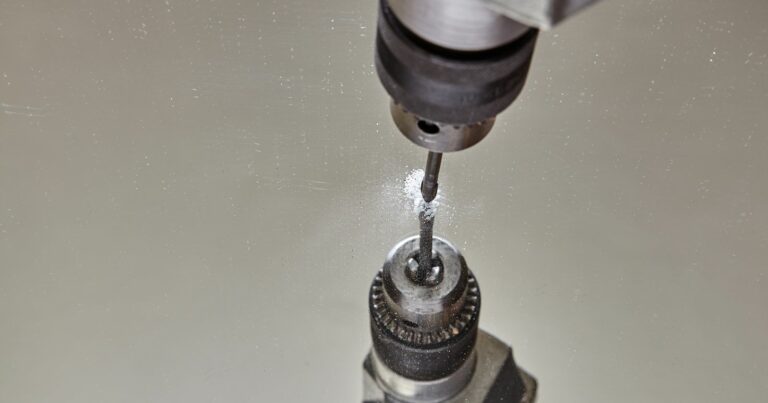How To Drill A Straight Hole Without A Drill Press
For many DIY enthusiasts and home repair experts, the ability to drill straight and accurate holes is a fundamental skill that can make or break a project. Whether you’re assembling furniture, mounting shelves, or undertaking a delicate craft, the precision of your holes directly impacts the quality and stability of the final product. However, not everyone has access to a drill press, a tool renowned for its ability to guarantee perfectly vertical and consistent holes. This limitation poses a significant challenge, especially when the success of your project hinges on the accuracy of your drilling..
In this guide, I will explore the secrets to mastering the art of drilling straight holes using tools and materials you likely already have at your disposal. Let’s dive in!!
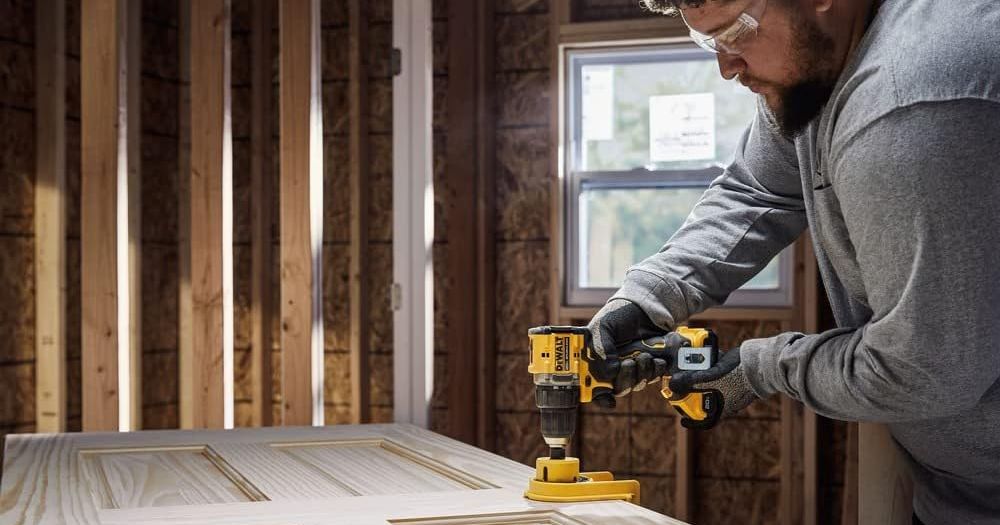
Why Drilling a Straight Hole Without a Drill Press is Important
For many DIY enthusiasts and home repair experts, the drill press stands as an emblem of precision and reliability, a tool that effortlessly punches straight holes through any material. However, the reality for most is quite different. The bulkiness and expense of a drill press make it an impractical addition to the average home workshop. This leaves many to rely on handheld drills, which, while versatile, pose a significant challenge when it comes to maintaining the straightness of holes. The importance of overcoming this challenge cannot be overstated, as the precision of your holes can greatly impact the structural integrity and aesthetic quality of your projects.
A Step-by-Step Guide on How to Drill a Straight Hole Without a Drill Press
Overview
The notion of drilling a perfectly straight hole without the aid of a drill press might seem daunting at first. However, with the right techniques and a bit of practice, achieving precision with hand tools or simple setups is entirely feasible. This guide will walk you through the essential steps to drill straight holes, ensuring your projects are both high-quality and professional-looking, even without expensive equipment.
Gathering Your Tools and Materials
Before you begin, it’s crucial to have the right tools and materials on hand. Here’s what you’ll need:
- A handheld drill
- Drill bits suitable for your material
- A square or a drill guide
- Masking tape
- A pencil or marking tool
- Clamps
- A piece of scrap wood (if drilling through completely)
- Safety goggles
With these items ready, you’re set to tackle the task with confidence.
The Step-by-Step Process
Preparing Your Work Surface
- Secure the Workpiece: Use clamps to firmly attach your material to your workbench. If you’re drilling through the material, place a piece of scrap wood underneath to prevent tear-out when the drill bit exits.
- Ensure Stability: Make sure your workbench and the surface you’re drilling on are stable. Any movement could affect the drill’s accuracy.
Marking the Drill Point
- Measure Carefully: Use a ruler or measuring tape to find the exact spot where you want to drill. Precision at this stage is key to the success of your project.
- Mark the Spot: With a pencil or marking tool, clearly mark the drilling point. A small indentation can help guide the drill bit.
Setting Up a Guide for Straight Drilling
- Use a Square: For a quick guide, you can hold a square against the drill bit to ensure it’s perpendicular to the drilling surface.
- Create a Jig: For repeated tasks, consider making a simple jig with a 90-degree angle to guide your drill bit.
- Commercial Drill Guides: These are available for purchase and can be a great investment for frequent drilling.
Drilling the Hole
- Start Slow: Begin drilling at a slow speed to establish the hole, keeping the drill as straight as possible.
- Increase Speed Gradually: Once the hole is started, you can increase the speed, maintaining pressure to keep the drill bit straight.
- Check Alignment: Periodically stop drilling to check the alignment of the hole with your square or guide.
Finishing Touches
- Clean the Hole: Remove any burrs or rough edges with a file or sandpaper for a clean finish.
- Clean the Work Area: Ensure your workspace is clear of debris and dust.
Wrapping Up
Drilling a straight hole without a drill press is a skill that, once mastered, can greatly enhance the quality of your DIY projects and home repairs. With the steps outlined above, you’re well on your way to achieving precise, clean holes in a variety of materials. Remember, patience and practice are key. Each project you complete will build your confidence and skill level, making what once seemed like a daunting task a straightforward part of your DIY repertoire.
Tools and Materials You’ll Need
List of Essentials
To ensure your project’s success and safety, having the right tools and materials is crucial. Here’s a detailed list of what you’ll need to drill straight holes without a drill press:
Handheld Drill: A reliable and powerful drill is essential. Cordless models offer convenience and portability, while corded drills provide continuous power for longer projects.
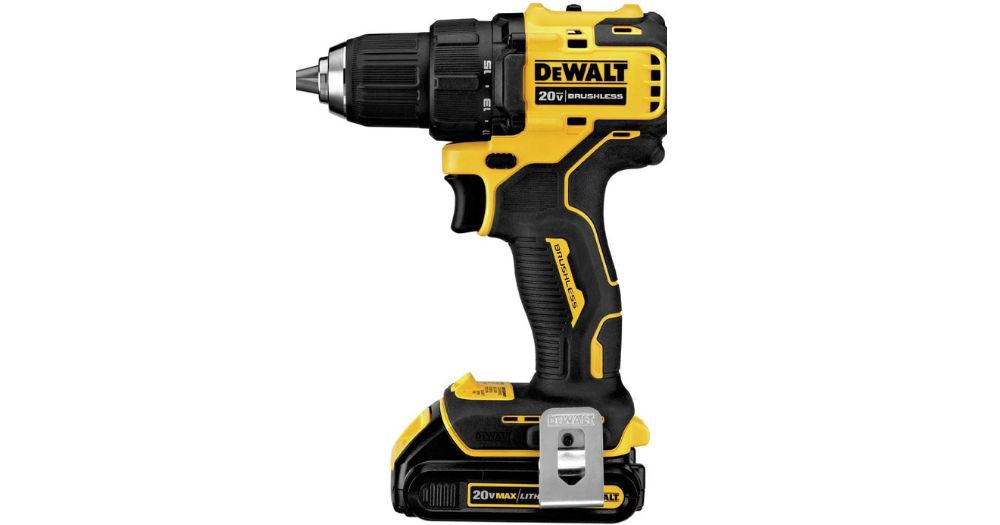
Drill Bits: Select bits that are appropriate for the material you’re drilling. For wood, use brad-point bits; for metal, high-speed steel (HSS) or cobalt bits; and for masonry, carbide-tipped bits.
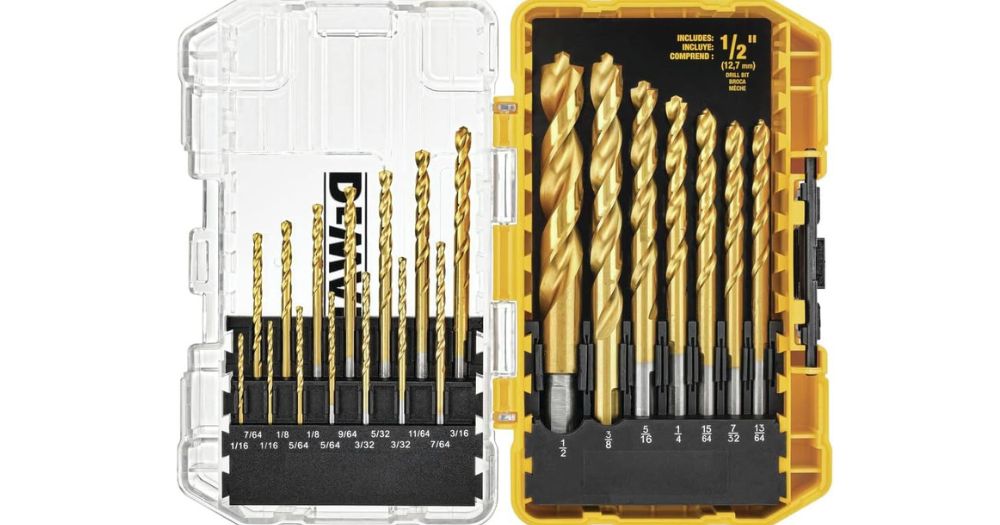
Square or Drill Guide: These tools help ensure your drill bit enters the material at a 90-degree angle. A drill guide is especially useful for maintaining accuracy.
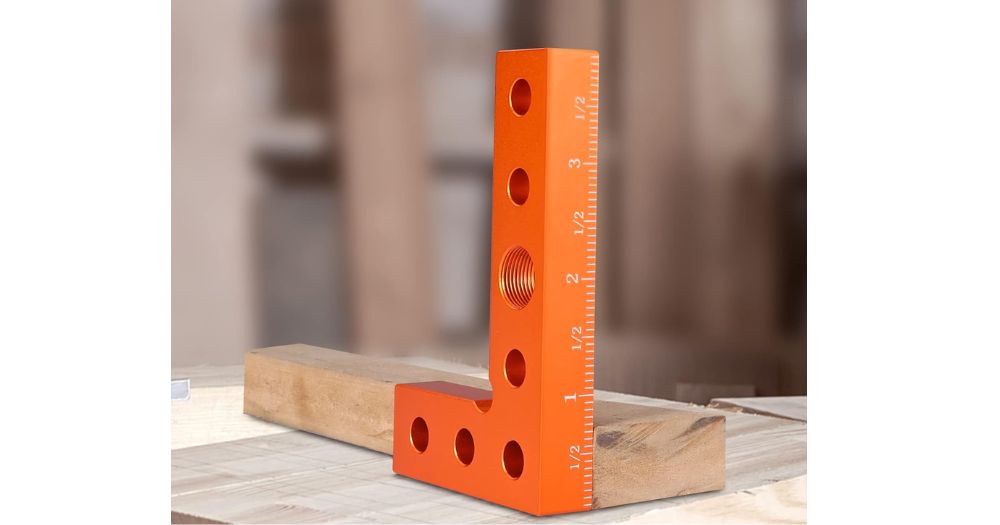
Clamps: To secure your workpiece firmly to your workbench or another stable surface. This prevents movement and ensures accuracy.
Scrap Wood: Placing a piece of scrap wood beneath your workpiece can prevent tear-out when the drill bit exits the material.
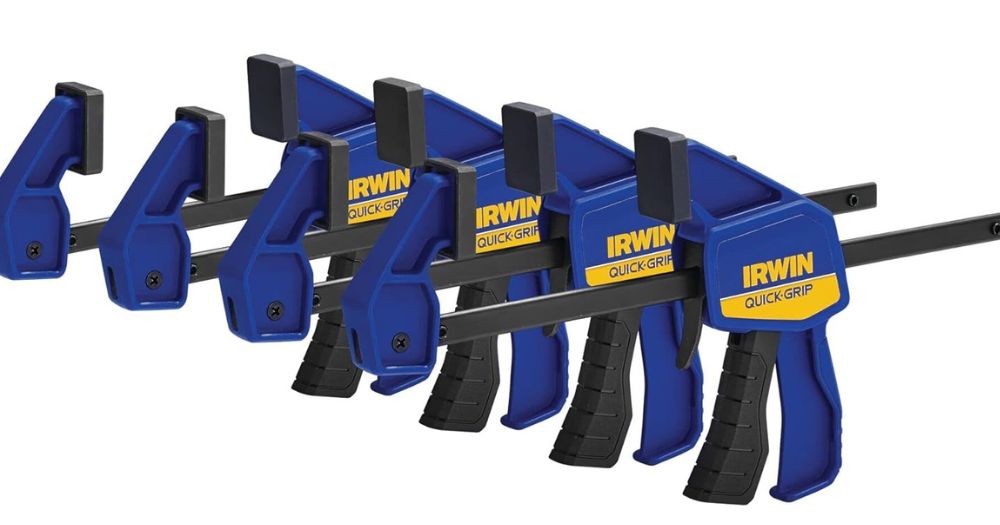
Masking Tape: Applying tape over your drilling area can help reduce splintering in wood and provides a visible mark to drill through.
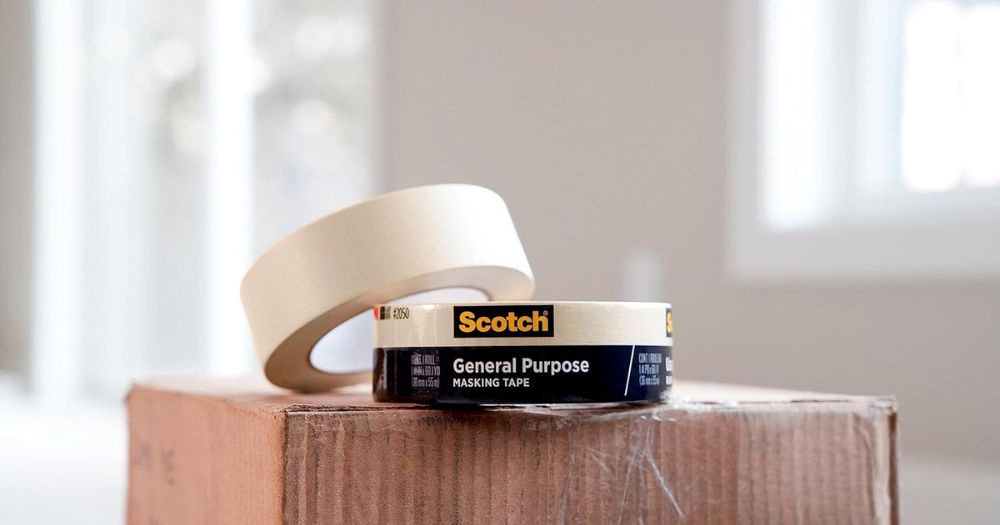
Pencil or Marking Tool: For precise marking of your drill point.

Safety Goggles: Protect your eyes from dust, debris, and any flying particles.
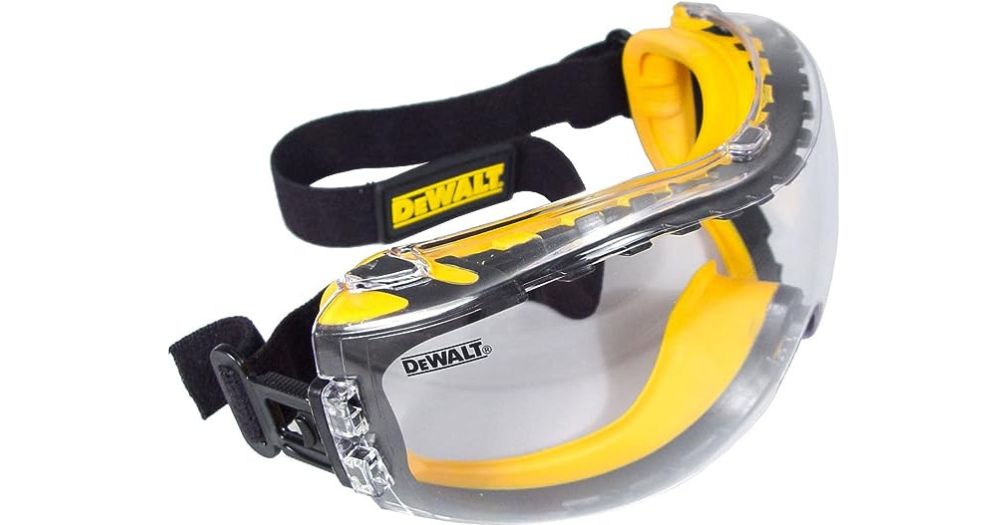
Ear Protection (optional): Prolonged drilling, especially in metal or masonry, can be loud. Protect your hearing with earplugs or earmuffs.
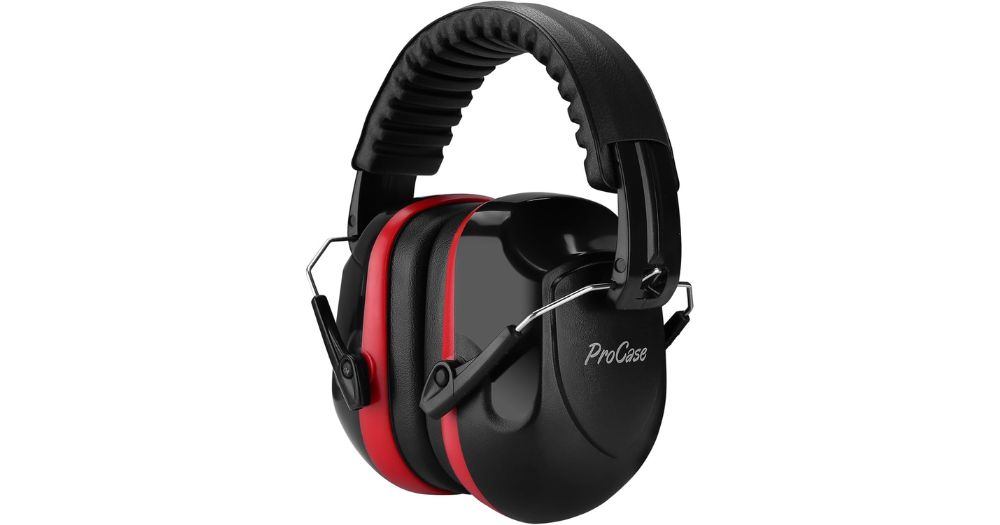
Additional Tips
- Selecting the Right Drill Bits: The material you’re drilling into dictates the type of drill bit you should use. Always choose the bit size that matches the hole you intend to drill. If you’re unsure, start with a smaller bit and work your way up to the desired size.
- Maintaining the Drill: Keep your drill in top condition by regularly checking for wear and tear, especially on the chuck and battery (for cordless models). Clean your drill after each use to remove dust and debris that could affect its performance.
- Ensuring Safety While Drilling: Always wear safety goggles to protect your eyes. Secure loose clothing and hair to prevent them from getting caught in the drill. Work in a well-lit and ventilated area, especially when drilling materials that can produce harmful dust or fumes.
- Drill Bit Sharpness: A sharp drill bit is crucial for precision and ease of drilling. Inspect your bits before each use and sharpen or replace them as needed. Dull bits require more force and can lead to inaccurate drilling.
- Practice Makes Perfect: If you’re new to drilling, practice on scrap pieces of the same material before starting on your project. This will help you get a feel for the drill’s behavior and how much pressure to apply.
By preparing with the right tools and materials and following these additional tips, you’ll be well-equipped to tackle any project that requires drilling straight holes without a drill press.
Watch This Video And Learn About How To Drill A Straight Hole Without A Drill Press
Detailed Instructions
Expanding on the basic steps provided earlier, this section delves deeper into the nuances of drilling straight holes without a drill press, offering troubleshooting tips and adjustments for different materials. These detailed instructions aim to refine your technique, ensuring precision and efficiency in your drilling projects.
Preparing Your Work Surface
- Stability is Key: Ensure both the workpiece and the surface it rests on are stable. Use heavy-duty clamps and check for any wobble before you begin. For larger pieces, consider using multiple clamps to secure all sides.
- Protecting the Material: If you’re working with a delicate or finished surface, place a layer of masking tape over the area to drill. This not only prevents splintering in wood but also avoids scratching or damaging the surface finish.
Marking the Drill Point
- Precision Marking: Use a sharp pencil or a fine-point marker for accurate marking. For hard-to-see materials, a center punch can create a small indent that guides the drill bit.
- Double-Check Measurements: Before drilling, measure the marked point from multiple angles to ensure it’s exactly where you want the hole. A small ruler or a digital caliper can be invaluable here.
Setting Up a Guide for Straight Drilling
- Improvised Guides: If you don’t have a commercial drill guide, you can create one using a piece of square lumber or metal. Clamp it adjacent to the drilling point as a visual guide to keep the drill bit perpendicular.
- Using a Mirror: For an innovative way to check your angle, place a small mirror next to your drilling area. You can observe the reflection of your drill to ensure it’s straight from another perspective.
Drilling the Hole
- Starting the Hole: Begin with a smaller pilot hole to guide the larger bit. This is especially helpful in hard materials like metal or dense hardwoods, where precision is critical.
- Adjusting Speed: Different materials require different drilling speeds. Hard metals need slower speeds to prevent overheating, while softwoods can be drilled at higher speeds. Always start slow and increase speed as needed.
- Applying Pressure: Apply steady, moderate pressure. Too much force can bend the bit or cause it to break, especially in brittle materials like acrylic or thin metal.
- Cooling the Bit: In metal, periodically withdraw the bit and use cutting fluid or water to cool it. This prevents overheating, which can dull the bit and make drilling more difficult.
Adjusting for Different Materials
- Wood: Use sharp brad-point bits for clean holes. Clamp a piece of scrap wood behind your workpiece to prevent tearout.
- Metal: Start with a pilot hole and use a lubricant like cutting oil. Drill at a slow speed to prevent overheating.
- Plastic: Use a bit designed for plastics to prevent cracking. Drill at a moderate speed and avoid excessive pressure.
Finishing Touches
- Smoothing Edges: Use a countersink bit or fine-grit sandpaper to smooth the edges of the hole, removing any burrs or sharpness.
- Cleaning Up: Remove any debris from the work area and your workpiece. A clean workspace is essential for precision work.
By following these detailed instructions and adjusting your approach based on the material, you’ll achieve straight, clean holes in a variety of projects, enhancing both the functionality and aesthetics of your work.
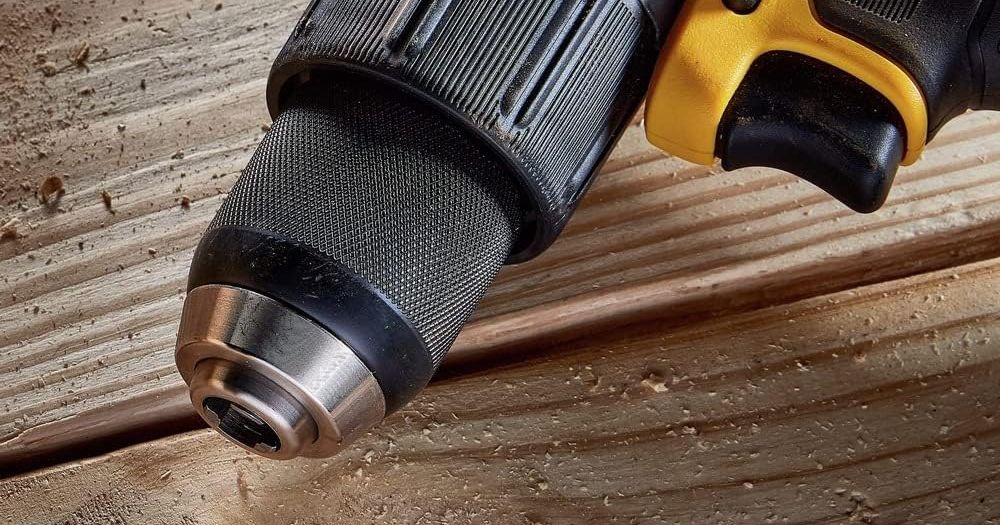
Best Practices and Tips
Drilling straight holes without a drill press is a skill that improves with knowledge, patience, and practice. Here are expert tips and best practices that will help you achieve precision and efficiency in your drilling projects, ensuring your work not only meets but exceeds expectations.
The Importance of Patience and Practice
- Start Slow: When beginning to drill, start slowly to establish the hole. Once the bit has begun to bite into the material, you can gradually increase speed.
- Practice on Scrap Material: Before drilling into your final piece, practice on scrap material. This helps you get a feel for how the drill and bit behave with different materials and speeds.
- Take Breaks: If you’re working on a project that requires drilling multiple holes, take breaks to prevent fatigue. Tiredness can lead to mistakes and inaccuracies.
Emphasizing Safety
- Wear Protective Gear: Always wear safety goggles to protect your eyes from flying debris. For noisy operations, use ear protection to safeguard your hearing.
- Check Your Equipment: Before starting your project, ensure your drill and all accessories are in good working condition. Damaged equipment can lead to accidents.
Common Mistakes I’ve Learned to Avoid When Drilling Straight Holes Without a Drill Press
Drilling straight holes without the aid of a drill press is a skill that comes with its own set of challenges. Over time, I’ve encountered several common pitfalls that can turn what should be a straightforward task into a frustrating ordeal. Here, I will share these mistakes and provide tips on how to avoid them, ensuring a smoother and more successful drilling experience.
1. Not Using a Guide
Mistake: Attempting to drill straight by eye alone.
Solution: Always use a guide. This could be a commercial drill guide, a homemade jig, or even a simple square. A guide not only helps ensure the drill bit enters the material at the correct angle but also maintains that angle throughout the drilling process.
2. Failing to Secure the Workpiece
Mistake: Holding the workpiece by hand or not clamping it down securely.
Solution: Use clamps to firmly attach your workpiece to a stable surface. This prevents movement, which is a common cause of angled or off-center holes.
3. Using Dull Drill Bits
Mistake: Ignoring the condition of the drill bit and using one that is dull or damaged.
Solution: Regularly inspect your drill bits for wear and tear and sharpen or replace them as needed. A sharp bit is essential for precision and ease of drilling.
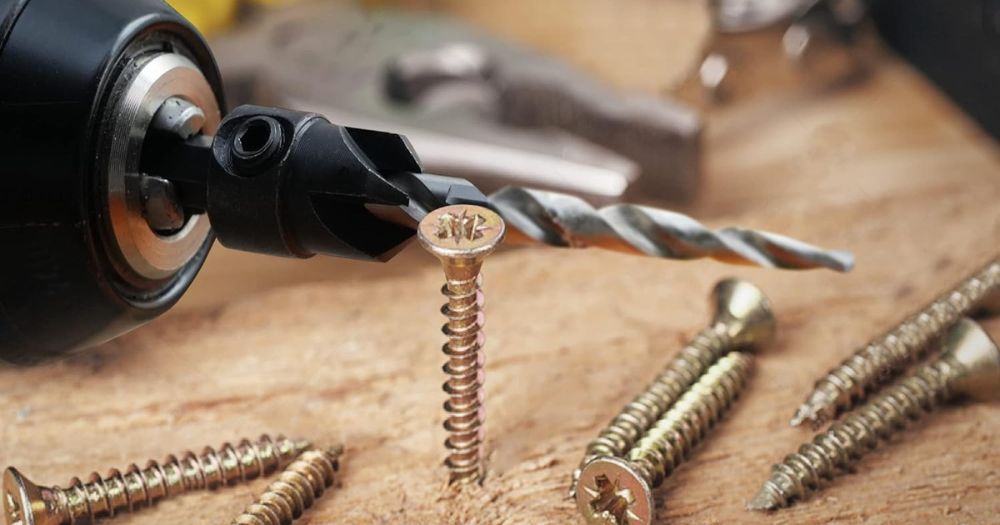
4. Incorrect Drill Speed
Mistake: Using the same speed for all materials and drill bit sizes.
Solution: Adjust the drill speed according to the material and the size of the drill bit. Harder materials and larger bits require slower speeds to prevent overheating and bit damage.
5. Applying Too Much Pressure
Mistake: Forcing the drill bit into the material with excessive pressure.
Solution: Let the drill bit do the work. Apply steady, moderate pressure, and be patient. Forcing the bit can lead to breakage or cause the drill to veer off course.
6. Skipping the Pilot Hole
Mistake: Drilling the final hole size without starting with a smaller pilot hole.
Solution: Especially in hard materials, a pilot hole acts as a guide for the larger bit, making it easier to drill straight and reducing the risk of the bit wandering.
7. Ignoring Safety Precautions
Mistake: Overlooking basic safety measures, such as not wearing safety goggles.
Solution: Always wear appropriate safety gear, including safety goggles and, if necessary, ear protection. Secure loose clothing and hair to prevent them from getting caught in the drill.
8. Not Practicing
Mistake: Jumping into projects without sufficient practice.
Solution: Practice drilling on scrap pieces of the same material before starting on your project. This helps you get a feel for how the drill and bit behave, allowing you to adjust your technique as needed.
By being aware of these common mistakes and taking steps to avoid them, you can greatly improve your ability to drill straight holes without a drill press. Remember, every project is an opportunity to refine your skills and learn something new. With patience and practice, you’ll find that drilling precise holes by hand becomes second nature.
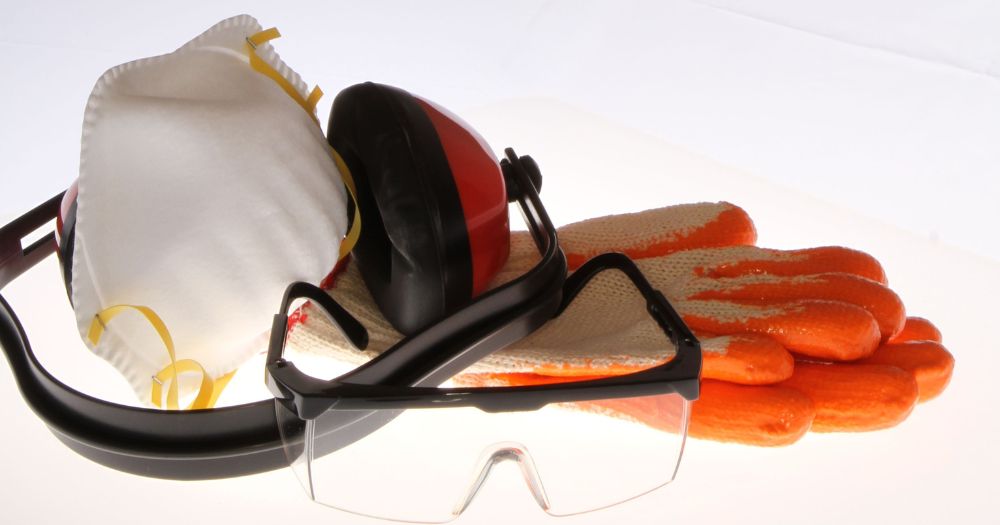
FAQs: Drilling Straight Holes Without a Drill Press
You’ve got questions, and I’ve got answers. This FAQ section is designed to tackle the most common queries you might have about how to drill a straight hole without a drill press. These are also the questions that often pop up in Google’s People Also Ask, so let’s get straight to the point.
How To Drill A Straight Hole Without A Drill Press
Absolutely. While a drill press is ideal for precision, you can achieve straight holes with hand drills by using the right techniques, tools, and practice. Guides, jigs, and careful setup are key to success.
What’s the best way to ensure my drill bit starts where I want it to?
Mark and punch. First, mark your drilling point clearly with a pencil or marker. Then, use a center punch to create a small indentation at the mark. This will help guide the drill bit and prevent it from wandering when you start drilling.
How do I choose the right drill bit for my project?
Consider the material. Use brad-point bits for wood, high-speed steel (HSS) or cobalt bits for metal, and masonry bits for concrete or brick. The right bit not only drills more efficiently but also lasts longer.
Wrapping Up: How to Drill a Straight Hole Without a Drill Press
As I’ve journeyed through the nuances of drilling straight holes without the luxury of a drill press, it’s clear that precision isn’t solely the domain of expensive tools and machinery. Instead, it’s a skill honed by understanding, patience, and practice. Armed with the right techniques, a bit of know-how, and a steady hand, you’re now equipped to tackle projects with a newfound confidence.
Thank you for joining me on this journey. Here’s to many successful projects ahead, each one a testament to your skill, creativity, and determination. Happy drilling!

